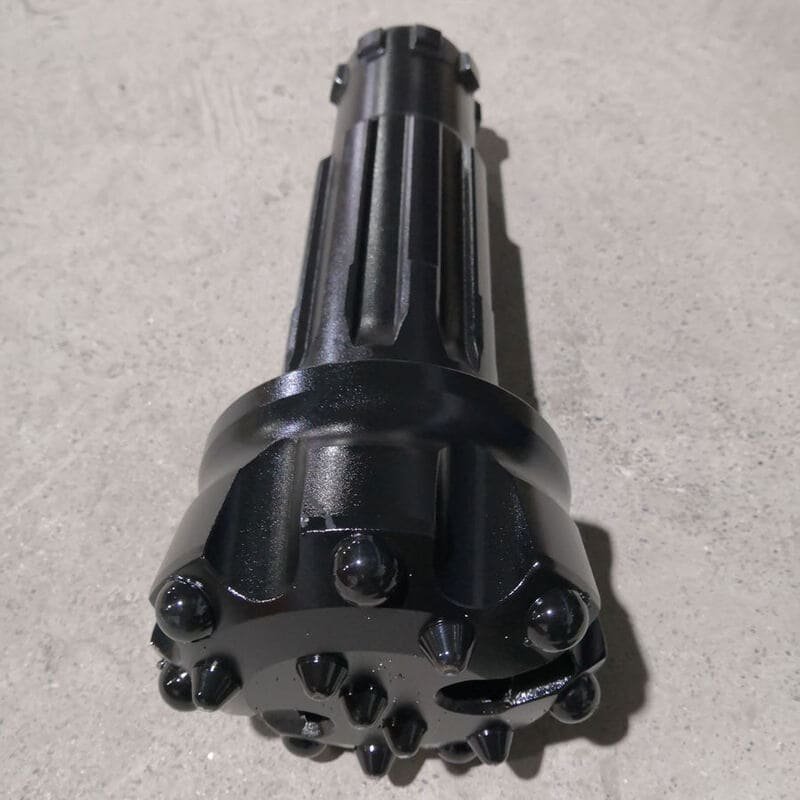Ever wondered what keeps those DTH bits going strong in the toughest drilling scenarios? Well, let me share a little secret with you.
Hardness testing for DTH bits ensures they meet specific durability standards, enhancing their wear resistance and operational longevity in challenging drilling conditions. By achieving optimal hardness levels, these bits can withstand high-frequency impacts and abrasive environments effectively.
Imagine this: I'm standing on a rugged site, drill in hand, facing a stubborn piece of rock that just won't budge. That's when I truly appreciate the magic of hardness testing. It's not just about numbers; it's the backbone of quality assurance and performance in our industry.
Hardness testing isn't merely a technical step—it's the unsung hero that ensures every bit performs flawlessly. By scrutinizing the material's toughness, we predict how well it will hold up against the relentless pounding of drilling operations. This testing is my safety net, confirming that each bit can take a beating without losing its edge.
And let's not forget the peace of mind it brings. Knowing that every bit has been rigorously tested means fewer unexpected failures on-site, which keeps both the operation safe and my stress levels in check. Hardness testing is the invisible hand that steadies the course of drilling success, one reliable bit at a time.
Hardness testing improves DTH bits' wear resistance.True
Hardness testing ensures DTH bits meet durability standards, enhancing wear resistance.
DTH bits are unaffected by high-frequency impacts.False
Without proper hardness, DTH bits can be damaged by high-frequency impacts.
How Does Hardness Testing Impact the Performance of DTH Bits?
Have you ever wondered how a small test could drastically improve the performance of drilling tools?
Hardness testing plays a crucial role in assessing the strength of DTH bits, ensuring they perform optimally and last longer in challenging drilling conditions. This testing confirms that the heat treatment process was successful, which is key to achieving the desired wear resistance and efficient penetration.
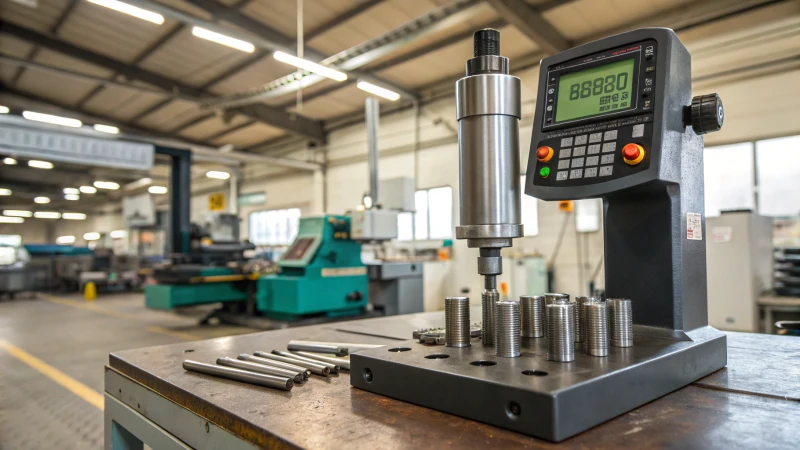
The Role of Hardness Testing in Quality Assurance
I remember the first time I saw a batch of DTH bits coming off the production line. The air was thick with anticipation as we awaited the results of their hardness tests. Why? Because each test confirmed that our efforts in ensuring quality were paying off. Hardness testing is like a final checkpoint—it ensures that each bit reaches the market ready to tackle any challenge. Manufacturers rely on these tests to guarantee that every tool in the batch can perform consistently, no matter where it ends up.
Quality Assurance Table:
| Aspect | Importance |
|---|---|
| Batch Consistency | Ensures uniformity across production |
| Heat Treatment Check | Verifies effective heat treatment |
| Material Integrity | Detects flaws in material composition |
Performance Verification Through Hardness Testing
The day I witnessed a DTH bit piercing through tough rock formations effortlessly was when I truly understood the importance of hardness testing. It’s not just about making sure a tool is hard enough; it’s about optimizing its performance to achieve efficient penetration and withstand wear. When those bits meet the right hardness levels, they become indispensable allies in drilling operations.
- Effective Penetration: Optimal hardness1 increases drilling efficiency by reducing bit wear.
- Wear Resistance: Ensures durability across different rock formations.
Durability and Material Integrity
I’ve seen firsthand how identifying material flaws early can save countless hours and resources. Hardness testing is our detective, revealing those hidden imperfections that could lead to premature failures. Addressing these issues before they escalate not only safeguards operations but also refines our heat treatment process2.
- Flaw Detection: Early identification prevents operational failures.
- Material Strength: Ensures robustness in high-impact environments.
Operational Safety and Optimization
Safety is paramount in our line of work. I’ve learned that ensuring the correct hardness isn’t just about performance—it’s about protecting everyone involved in drilling operations. Bits that are too soft can lead to unexpected failures, posing risks that no one should face. Hardness testing provides crucial feedback, allowing us to fine-tune our processes for safer and more efficient operations.
- Safety Measures: Correct hardness3 ensures safe drilling operations.
- Process Feedback: Facilitates fine-tuning of heat treatment parameters for optimal performance.
Understanding these facets of hardness testing truly highlights its significance in enhancing the overall performance and safety of DTH bits. Dive deeper to explore how specific heat treatment processes can influence bit performance across various geological conditions.
Learn more about heat treatment impacts4.
Hardness testing ensures DTH bits' batch consistency.True
Testing verifies uniform hardness, ensuring consistent quality across production batches.
DTH bits with optimal hardness fail prematurely.False
Optimal hardness enhances durability, preventing premature failure during drilling operations.
How do we test the hardness of DTH bits?
Ever wondered how the toughness of DTH bits is determined? It's all about hardness testing!
Methods such as Rockwell, Brinell, and Vickers tests are commonly used to assess the hardness of DTH bits. Each method uniquely measures surface resistance, ensuring these tools meet specific durability and performance standards for demanding drilling tasks.
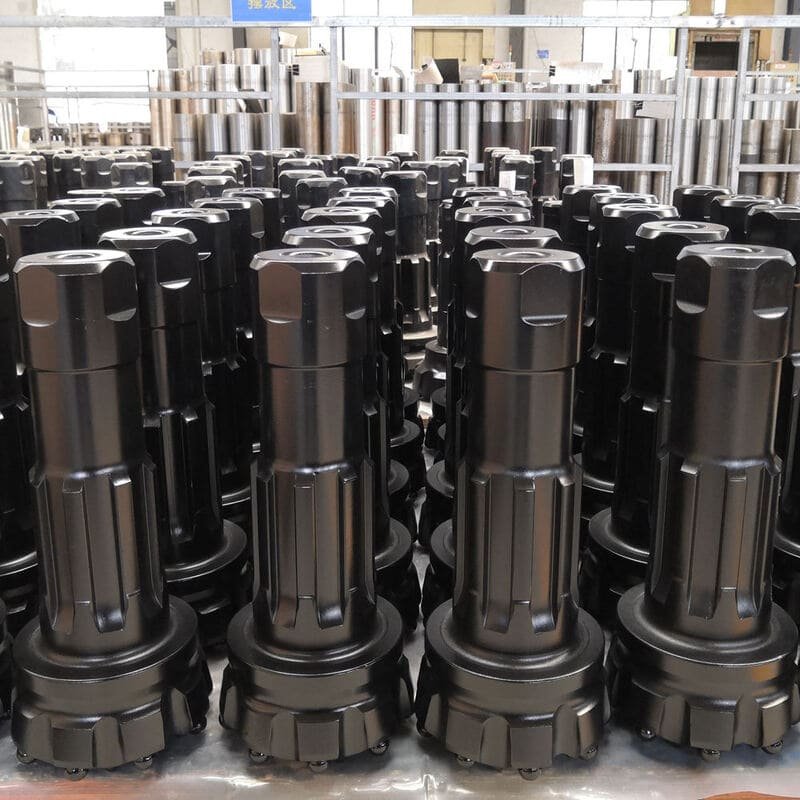
Understanding Hardness Testing Methods
When I first learned about hardness testing for DTH bits, it felt like unlocking a secret code to their performance and durability. Imagine each test as a different lens through which we view the material's resilience against wear and tear.
| Method | Principle | Typical Application |
|---|---|---|
| Rockwell | Depth of penetration under load | Quick assessments |
| Brinell | Diameter of indentation under load | Bulk materials |
| Vickers | Diagonal length of indentation | Thin materials |
Rockwell Hardness Test
The Rockwell test5 was my go-to when I needed quick results. I loved how straightforward it was—just a simple measurement of how deep the indenter goes under a specified load.
- Pros: It's fast and fuss-free, with minimal prep work needed.
- Cons: Not the best choice if you're dealing with thin or surface-coated materials.
Brinell Hardness Test
With the Brinell test6, I always felt like a sculptor, leaving behind these neat, round impressions as it measured indentation diameter. Perfect for when you're handling bulk materials.
- Pros: Gives a nice average hardness over a big area—great for mixed materials.
- Cons: The big indents can be a problem if you want your parts to stay pretty.
Vickers Hardness Test
The Vickers method7 is what I relied on for versatility. It uses a diamond indenter and can handle anything from tiny samples to larger chunks.
- Pros: Works on all sorts of materials, even those delicate thin sections.
- Cons: A bit more involved with the setup and sample prep.
Applications in Quality Assurance
In my experience, quality assurance hinges on these hardness tests. They’re not just about ticking boxes; they ensure every bit stands up to its job. For me, knowing that each DTH bit could withstand the pressure meant peace of mind—especially after heat treatment processes that push materials to their limits.
Mastering these testing techniques not only helped me optimize manufacturing processes but also assured me that our products would thrive in those harsh drilling environments. It's like having a reliable partner by your side in every challenging project.
Rockwell test is suitable for thin materials.False
The Rockwell test is not ideal for thin materials due to penetration depth.
Brinell test leaves a large indentation on tested materials.True
The Brinell test creates a large indentation, unsuitable for finished parts.
Why Is Material Integrity Crucial in DTH Bit Manufacturing?
Ever wondered why some drilling operations run smoothly while others hit a snag? The secret often lies in the material integrity of the DTH bits used.
Material integrity in DTH bit manufacturing ensures durability, consistent performance, and safety during drilling operations by using high-grade materials and precise heat treatment to endure harsh conditions.
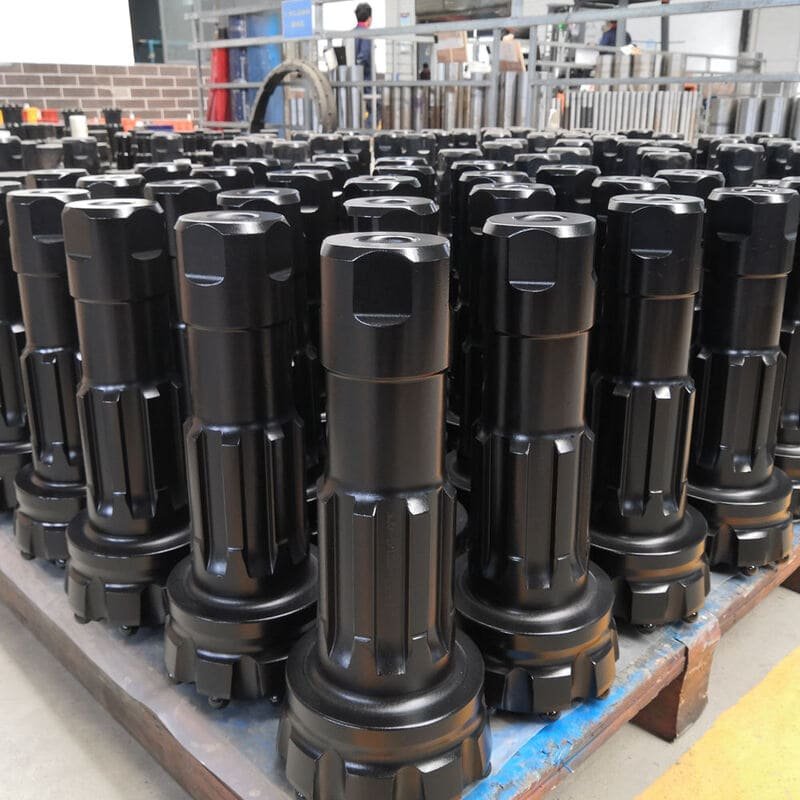
I remember a time when I learned the hard way about the importance of material integrity in DTH bits. We were on a major drilling project, and everything seemed to be going well—until it wasn't. The bits we were using just weren't up to the task, and we faced a cascade of setbacks. That's when I realized how critical it is to use high-grade materials and proper heat treatment.
Importance of High-Grade Materials
You see, DTH bits are like the unsung heroes of drilling. They're constantly battling against tough conditions, from abrasive rocks to those jaw-dropping impact forces. By investing in materials like tungsten carbide, you ensure these bits can stand their ground without wearing out too soon.
A comparison of materials8 shows that high-quality alloys don't just last longer—they also maintain peak performance much better.
Role of Heat Treatment
Then there's heat treatment, which is almost like the magic touch for DTH bits. Through this process, the bits are heated and cooled in a controlled manner to achieve just the right hardness. This isn't just about toughness; it's about making sure they hold up under pressure.
A study on heat treatment9 highlights how this process boosts wear resistance, ensuring bits are reliable even in the toughest geological formations.
Consistency in Performance
With material integrity, you can count on your DTH bits performing consistently across different jobs. This means less downtime and more productivity since you're not constantly swapping out bits.
The table below illustrates how material quality affects drilling efficiency:
| Material Quality | Drilling Efficiency | Replacement Frequency |
|---|---|---|
| High | 95% | Low |
| Medium | 80% | Medium |
| Low | 60% | High |
Enhancing Safety Standards
Safety is another biggie. Bits with poor material integrity can fail unexpectedly, and that's not just inconvenient—it can be downright dangerous. Rigorous testing ensures each bit reaches the necessary hardness levels to prevent such incidents.
An exploration of safety standards10 underscores the importance of thorough testing to keep operations safe.
Economic Implications
Sure, high-integrity materials might cost more upfront, but they're a wise investment. Durable bits mean fewer replacements and lower maintenance costs, which translates to a better ROI for drilling operations.
A financial analysis11 demonstrates how quality materials boost economic efficiency in the long haul.
High-grade materials improve DTH bit lifespan.True
Tungsten carbide and high-quality alloys enhance durability and performance.
Heat treatment decreases DTH bit wear resistance.False
Proper heat treatment increases hardness, enhancing wear resistance.
Why is hardness testing crucial for ensuring operational safety?
I remember the first time I realized just how vital material integrity was to operational safety. It was a game-changer for me.
Hardness testing is essential for operational safety because it ensures materials are strong enough to handle stress and wear, reducing the risk of equipment failure and accidents.

Quality Assurance
I learned early in my career that consistency is key. Imagine working with a batch of DTH drill bits where one is just slightly off in hardness—it could lead to a catastrophic failure. Hardness testing provides that peace of mind, ensuring each bit meets the required standards after manufacturing and heat treatment, thus maintaining consistent quality across all production batches. This is where quality assurance12 becomes indispensable.
Performance Verification
Reflecting on past projects, I've seen firsthand how the performance of drilling equipment hinges on achieving optimal hardness levels. Those DTH drill bits, when perfectly hard, become unstoppable forces in rocky terrains. Testing ensures they penetrate effectively, balancing between performance and safety during operations. Through rigorous performance verification13, we ensure every bit complies with industry standards.
Durability Assessment
In the field, where conditions can be unforgiving, the durability of materials is non-negotiable. I remember a time when a slightly softer bit led to unexpected downtime—never again. Hardness testing helps predict how materials will withstand operational stresses, enabling us to plan maintenance schedules better and avoid sudden failures. Knowing your equipment's durability assessment ensures you're always one step ahead.
| Hardness Level | Expected Durability | Application |
|---|---|---|
| 35-40 HRC | Moderate | General use in stable environments |
| 55-60 HRC | High | Harsh drilling in rocky formations |
Material Integrity
I can't stress enough how early detection of material flaws can avert disaster. Hardness testing uncovers those hidden inconsistencies before they escalate into larger issues during operations. It’s like having an early warning system for material integrity14, which is essential for preventing failures that could lead to hazardous situations.
Optimization of Heat Treatment
The feedback loop from hardness testing is invaluable for fine-tuning our heat treatment processes. Properly treated materials stand up to stress better, enhancing both performance and safety. Heat treatment optimization15 allows us to maximize the reliability of our equipment, ensuring it’s ready to tackle even the most demanding drilling tasks.
Hardness testing is crucial for quality assurance.True
It ensures materials meet specific criteria, preventing failures.
Material integrity is unrelated to hardness testing.False
Hardness testing detects flaws, ensuring material integrity.
How Does Heat Treatment Affect Metal Hardness?
Ever wondered how a piece of metal transforms from a soft, pliable form into something as hard as steel?
Heat treatment plays a crucial role in achieving desired hardness levels by altering the physical and chemical properties of metals. Through controlled heating and cooling processes, it enhances performance and durability, making metals suitable for various applications.

The Science Behind Heat Treatment
I remember when I first learned about heat treatment. It felt like unlocking a secret club of metal transformation. You see, processes like annealing, quenching, and tempering aren’t just fancy words—they're the magic spells of metallurgy. For instance, quenching rapidly cools the metal to trap a super-hard structure, whereas tempering is like giving it a warm hug to balance toughness and reduce brittleness.
| Process | Description | Result |
|---|---|---|
| Annealing | Heating to soften material | Increased ductility |
| Quenching | Rapid cooling to form a hard microstructure | High hardness but increased brittleness |
| Tempering | Reheating to moderate temperature after quenching | Balanced hardness and toughness |
Practical Applications
Back in my early days in the industry, I saw firsthand how getting the hardness just right could make or break a project. In sectors like drilling, particularly with DTH drill bits, it's all about hitting that sweet spot of hardness post-heat treatment16. These tools need to be tough enough to withstand the harshest environments, much like how we need our morning coffee to kickstart the day!
Heat Treatment Parameters
Think of heat treatment like cooking your favorite meal—temperature, timing, and cooling are everything. When I adjusted these parameters just so during heat treatment17, it was like turning a dull knife into a sharp sword. Get one variable wrong, and you might end up with a metal that's too brittle or too soft.
Challenges and Considerations
Achieving uniform hardness across a material isn't always smooth sailing. Uneven heating or cooling rates can throw a wrench in the works. By understanding these challenges, I was able to fine-tune heat treatment processes18 for consistent quality, ensuring our metal products were top-notch every time.
Quenching increases metal brittleness.True
Quenching rapidly cools metal, increasing hardness and brittleness.
Annealing reduces metal's ductility.False
Annealing softens metal, increasing its ductility and workability.
How does hardness testing improve the lifespan of DTH bits?
Imagine getting more life out of your DTH bits with a simple test!
Hardness testing is your secret weapon for making DTH bits last longer. By checking the material's hardness, guiding heat treatment, and spotting flaws early, this test ensures your drill bits perform reliably under tough conditions.
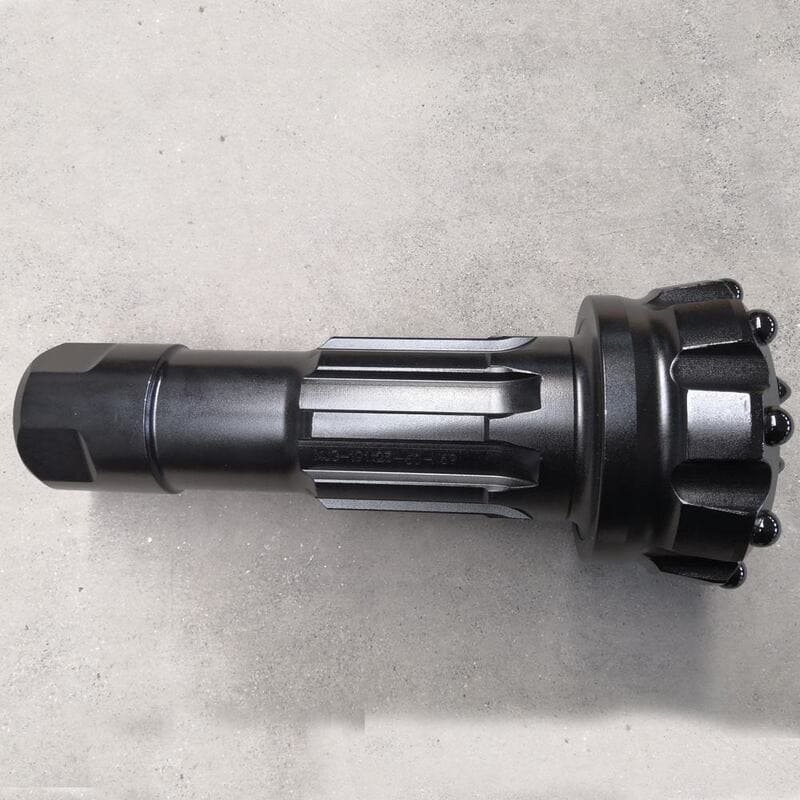
Understanding the Role of Hardness Testing
Let me take you back to when I first realized the power of hardness testing. Picture this: You're out on a drilling site, the clock is ticking, and each bit failure feels like a minor disaster. That's when it hit me—understanding hardness levels isn't just about numbers; it's about being prepared for whatever the earth throws at us. DTH bits19 have to handle the abrasive conditions drilling demands. Knowing their hardness means you can trust them to dig deep without giving up.
Quality Assurance Through Hardness Testing
You know that moment of relief when you realize you've done everything you could to ensure quality? That's what hardness testing offers for DTH bits. Each bit goes through a rigorous check to meet specific standards, using the Rockwell scale to measure resilience against surface deformation. Think of it as a handshake agreement between you and your equipment that says, "I’ve got your back."
| Aspect | Importance |
|---|---|
| Consistency | Ensures uniform performance across all units |
| Compliance | Meets international standards and specifications |
| Reliability | Minimizes unexpected downtime due to bit failure |
Performance Verification and Material Integrity
Every time you trust a DTH bit to pierce through rock, you’re relying on its tested performance. Hardness affects how efficiently it penetrates and resists wear. Hardness testing20 allows us to catch material inconsistencies before they lead to costly errors. It's like having a crystal ball for equipment issues—identifying flaws early means fewer headaches later.
- Predictive Maintenance: Regular testing helps predict when a bit might need replacing, cutting down on unplanned interruptions.
- Material Flaws: Spotting micro-cracks or heat treatment errors can prevent operational nightmares.
Operational Safety and Heat Treatment Optimization
Safety isn’t just a buzzword; it's everything. Imagine the risks if a bit fails unexpectedly during critical operations. Hardness testing provides feedback that fine-tunes heat treatment, ensuring the perfect balance between hardness and toughness.
- Safety: Reduces risk of catastrophic failures during critical operations.
- Efficiency: Fine-tuned heat treatment leads to better energy efficiency and cost savings.
Trust me, when every drilling operation counts, knowing your DTH bits are up to the challenge thanks to regular hardness testing is a game-changer. It's peace of mind in a high-stakes game.
DTH bits require hardness between 35-60 HRC for durability.True
This range is achieved post heat treatment to handle abrasive conditions.
Hardness testing of DTH bits is optional for manufacturers.False
Testing is crucial for quality assurance, preventing premature failure.
Conclusion
Hardness testing is crucial for DTH bits, ensuring durability, performance, and safety by verifying material integrity and optimizing heat treatment for challenging drilling conditions.
-
Exploring this link provides insights into the ideal hardness levels for enhancing drilling efficiency and wear resistance. ↩
-
This link explains the heat treatment processes that optimize material properties for improved bit durability. ↩
-
Learn how maintaining correct hardness ensures safe operation and minimizes risk during drilling. ↩
-
Understand how specific heat treatments affect the performance and longevity of drilling equipment. ↩
-
Learn about the Rockwell hardness test's mechanics and its applicability to industrial materials. ↩
-
Discover why the Brinell test is favored for bulk material hardness evaluations. ↩
-
Understand the Vickers test's detailed procedure and its adaptability across materials. ↩
-
Discover how different materials affect the durability and efficiency of DTH drill bits. ↩
-
Learn how heat treatment enhances the hardness and longevity of DTH drill bits. ↩
-
Understand the role of material integrity in ensuring safety during drilling operations. ↩
-
Explore how investing in high-grade materials leads to cost savings and improved ROI. ↩
-
Learn how maintaining quality assurance practices ensures consistent material integrity, preventing operational failures. ↩
-
Discover effective methods for verifying the performance of drilling equipment to ensure safety and efficiency. ↩
-
Explore various methods used in testing material integrity, crucial for preventing unexpected failures. ↩
-
Find out how optimizing heat treatment processes can enhance material performance and safety. ↩
-
Explores how heat treatment enhances the durability and performance of industrial tools. ↩
-
Details crucial factors that influence the outcomes of heat treatment. ↩
-
Identifies issues that can arise during heat treatment and their impact on material properties. ↩
-
Explore this link to understand the applications of DTH drill bits, enhancing your knowledge of their importance in drilling operations. ↩
-
Learn why hardness testing is crucial in manufacturing processes, ensuring product reliability and quality assurance. ↩

